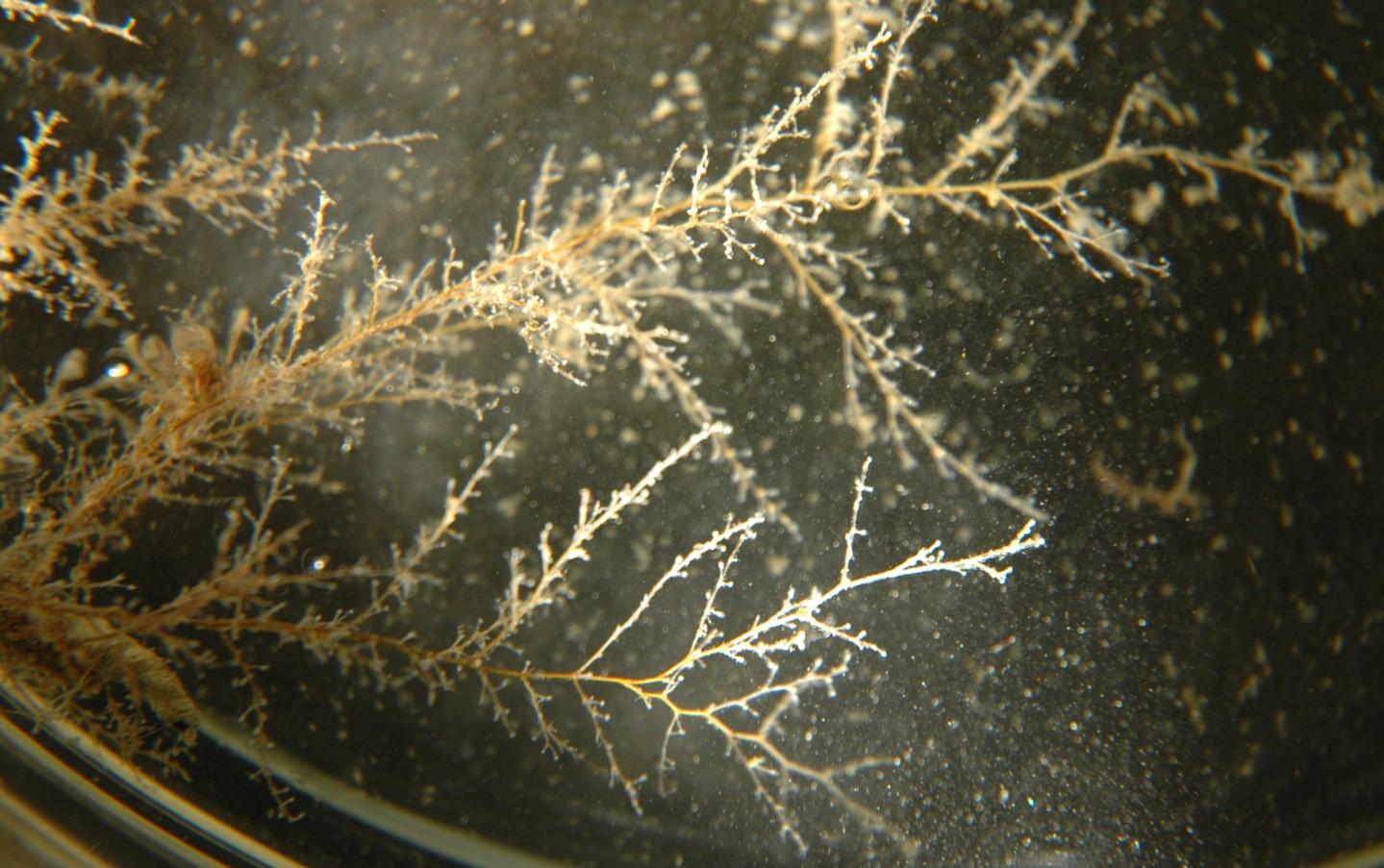Obelia dichotoma Linnaeus, 1758)Common name(s): Sea plume, Branched Obelia |
|
| Synonyms: |  |
| Phylum Cnidaria
Class Hydrozoa Order Hydroida Suborder Thecata (Leptomedusae) Family Campanulariidae |
|
| Obelia dichotoma, about 9 cm long. | |
| (Photo by: Dave Cowles, August 2006) | |
How to Distinguish from Similar Species: Obelia bidentata has toothed rims on the hydrotheca and older parts of the colony do not turn brown. Obelia geniculata is unbranched and usually lives on brown algae. Clytia spp. have less than 16 tentacles in the medusa and have toothed margins on the hydrotheca. Gonothyraea spp retains the medusae attached to the polyps.
Geographical Range: Alaska to San Diego, and worldwide in temperate zones
Depth Range:
Habitat: Common in protected waters attached to pilings, eelgrass, mussels, barnacles, seaweed, or debris. Uncommon on the open coast.
Biology/Natural History: The reproductive polyps of this species are in urn or club-shaped cups in the angles of the branches. They bud off small medusae (about 0.5 mm diameter when released, grow to about 5 mm). The medusae produce eggs and sperm. A fertilized egg grows into a planula larva. The surface of the branches of the colony often harbors diatoms, the nudibranch Eubranchus olivaceus, the suctorian nudibranch Ephelota, other small hydroids, and caprellid amphipods. The caprellid amphipods may eat diatoms, other creatures, or the Obelia polyps. Eubranchus olivaceus eats Obelia polyps. In Bodega Bay (CA) planula larvae from the medusae settle and begin growing into new colonies in winter, spring, and early summer. Colonies normally grow for 2-3 months.
| Return to: | |||
| Main Page | Alphabetic Index | Systematic Index | Glossary |
References:
Dichotomous Keys:Flora and Fairbanks, 1966
Kozloff 1987, 1996
General References:
Hinton,
1987
Johnson
and Snook, 1955
Kozloff,
1993
Morris
et al., 1980
Ricketts
et al., 1985
Scientific Articles:
Web sites:
General Notes and Observations: Locations, abundances, unusual behaviors:

A closeup of the colony, showing the brown perisarc on older sections
and the bell-shaped hydrotheca around each hydranth.
Authors and Editors of Page:
Dave Cowles (2006): Created original page